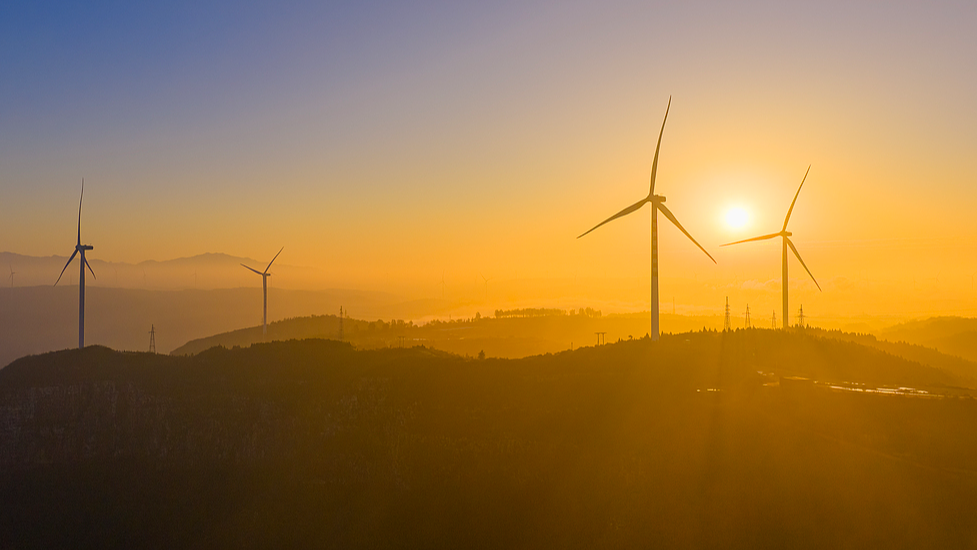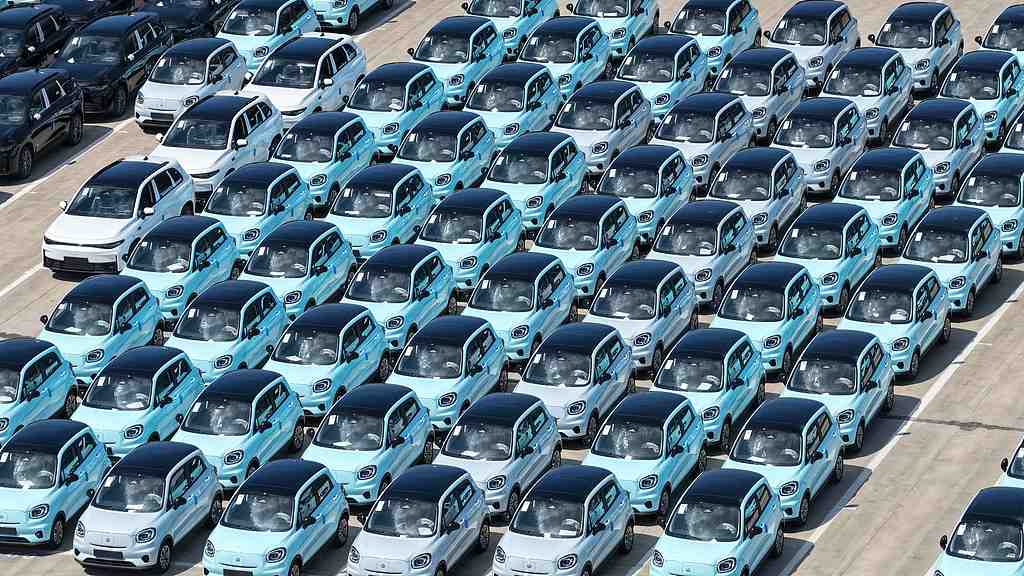Latest news
Insights from Chen Wenhui, the deputy dean of the School of Economics and Management at Beijing Forestry University were featured in a recent CGTN report on China's new climate action strategy. In the interview, Chen shared expert perspectives on the nation's pathway towards a clean energy future, highlighting the role of research and education in achieving these goals.
Below are excerpts from the report featuring our BFU contributor:
Experts: China leads in global clean energy transition with new climate roadmap

Wind turbines are seen against the sunrise in Jiyuan, central China's Henan Province, September 24, 2025. /VCG
On the 10th anniversary of the Paris Agreement, China took to the world stage to announce its updated climate targets from the UN podium.
At the United Nations Climate Summit 2025 held in New York on Wednesday, China outlined goals across energy, industry, ecosystems and adaptation. Experts hailed the package as a "more ambitious" Paris framework that serves as a "clarified continuation" of earlier pledges and provides guidance for future economic activity.
Under the new Nationally Determined Contributions (NDCs), China aims by 2035 to reduce economy-wide net greenhouse gas emissions by 7 percent to 10 percent from peak levels; lift non-fossil fuels to over 30 percent of total energy consumption; expand the total installed capacity of wind and solar power generation to reach 3.6 billion kilowatts, more than six times the 2020 level; scale up the total forest stock volume to over 24 billion cubic meters; make new energy vehicles (NEVs) the mainstream in new-car sales; expand the National Carbon Emission Trading System (National ETS) to cover major high-emission sectors; and basically establish a climate adaptive society.
……
"China's new round of NDCs reflects a clear reading of domestic and international dynamics and is a concrete, clarified extension of the country's carbon peaking and neutrality goals set in 2020 – both a guiding principle and a solemn commitment for advancing Chinese modernization in the new era," said Chen Wenhui, the deputy dean of the School of Economics and Management at Beijing Forestry University.
The "dual carbon" goals were China's previous major commitment announced at the UN General Assembly in 2020, that China would strive to achieve carbon dioxide peaking before 2030, and carbon neutrality before 2060.
In an interview with CGTN, Chen explained that these targets will "powerfully drive industrial upgrading, promote a cleaner, low-carbon energy mix, and accelerate greener production and lifestyles, laying a solid foundation for achieving China's carbon peaking and carbon neutrality goals." The package, he added, sets directions for emerging industries and defines concrete scopes and workloads for China's climate action.

New energy vehicles manufactured by Chinese companies are ready to be shipped to Europe, Jinhua, east China's Zhejiang Province, September 11, 2025. /VCG
……
Challenges ahead
Despite its progress, China still faces three major issues on the road to meeting its 2035 climate goals, according to Chen.
First, the power system must move beyond the rapid installation of non-fossil capacity and focus on using it well. Chen said this requires large-scale energy storage to smooth the intermittency of wind and solar, the intelligent upgrading of power grids to accommodate high renewable penetration, and the build-out of long-distance, cross-regional transmission together with flexible dispatch across different generation types to ensure stable delivery and efficient absorption of clean electricity.
Second, the momentum of new-energy vehicles will depend on the depth of the supporting industrial ecosystem and the pace of infrastructure deployment. Chen noted that China needs a comprehensive charging and battery-swap network that reliably covers cities, towns and highways, while advances in battery technology and tighter cost control remain essential to sustain market-driven growth.
Third, China's ETS must better translate policy into incentives. Chen urged expanding products and participants, deepening liquidity, and pricing allowances to reflect real abatement costs, so enterprises receive credible price signals and financing support for low-carbon investment.
To address these challenges, Chen recommended focusing national resources on research and development in new-type energy storage, high-efficiency photovoltaics and smart grids, while deepening power-market reforms so that the environmental value of green electricity is fully reflected in prices and guides the optimal allocation of resources.
He also highlighted leveraging new quality productive forces to integrate NEVs with the energy system, and emphasized accelerating the construction of a unified national market under common goals and rules so that each region can exploit its comparative advantages and deliver the critical nodes required for the transition.
Global impact
Li said China's submission significantly increases the share of global emissions covered by 2035 NDCs, bringing more certainty to the emissions trajectory of the next decade.
……
Echoing with Li's points, Chen said China's pledge is likely to raise global ambition by prompting more countries to submit stronger NDCs.
He added that China's vast demand for renewable energy, new-energy vehicles and energy storage will create market scale unmatched by others, which in turn should accelerate a global wave of green-technology innovation and drive costs down more quickly.
……
Chen also argued that China's commitments could reshape the political dynamics and incentive structures of global climate governance by encouraging broader and more pragmatic cooperation.
"Through initiatives such as the 'Belt and Road Initiative Green Development Coalition' and South–South cooperation, China can help other developing countries strengthen their capacity to address climate change and thereby expand the overall impact of global mitigation and adaptation efforts," Chen said.
Report link: CGTN: Experts: China leads in global clean energy transition with new climate roadmap












